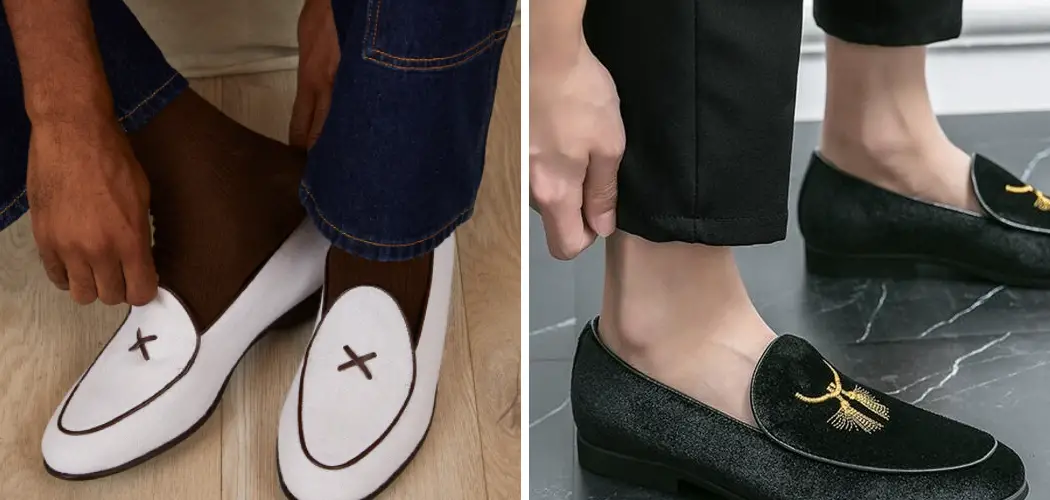Loafers are a timeless and versatile footwear choice that adds sophistication and style to any outfit. However, dealing with loose loafers can be a common frustration, leading to discomfort and an insecure fit.
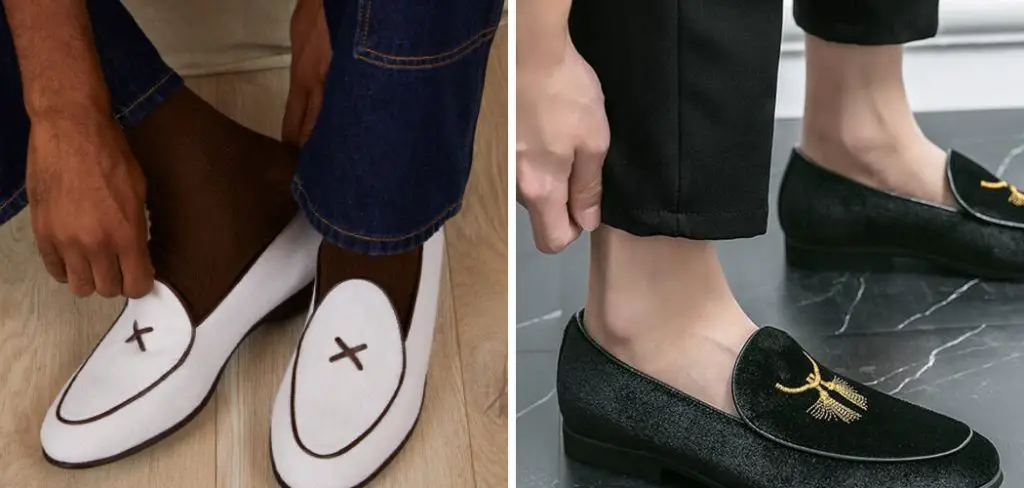
Fortunately, there are several effective methods to remedy this issue and ensure a snug and comfortable fit for your loafers. From simple DIY hacks to professional adjustments, finding the right solution for your loose loafers is essential for both comfort and confidence.
In this article, we’ll explore practical tips and techniques for how to make loose loafers fit, allowing you to enjoy their classic elegance without the hassle of slipping or sliding. Whether you’re dealing with excess space in the heel, width, or overall fit, these strategies will help you achieve a customized and secure fit for your loafers, ensuring a polished and stylish look with every step.
Importance of Proper Shoe Fit
The importance of proper shoe fit cannot be overstated, especially when it comes to maintaining comfort throughout the day. Shoes that fit well not only prevent discomfort but also avoid a host of foot problems, including blisters, bunions, and calluses. Furthermore, a good fit facilitates proper walking posture, which can reduce strain on the back, hips, and knees, ultimately enhancing overall body mechanics.
Particularly for loafers, which are often chosen for their sleek design and easy slip-on style, ensuring a secure fit is crucial for both comfort and function. Without the right fit, even the most stylish pair of loafers can lead to discomfort, affecting your ability to move confidently and smoothly.
Common Reasons for Loose Loafers
Loose loafers can occur due to a variety of factors, each impacting how well your footwear fits and feels during wear. Understanding these causes is the first step towards finding the perfect solution for a snugger fit. Here are some of the most common reasons for loose loafers:
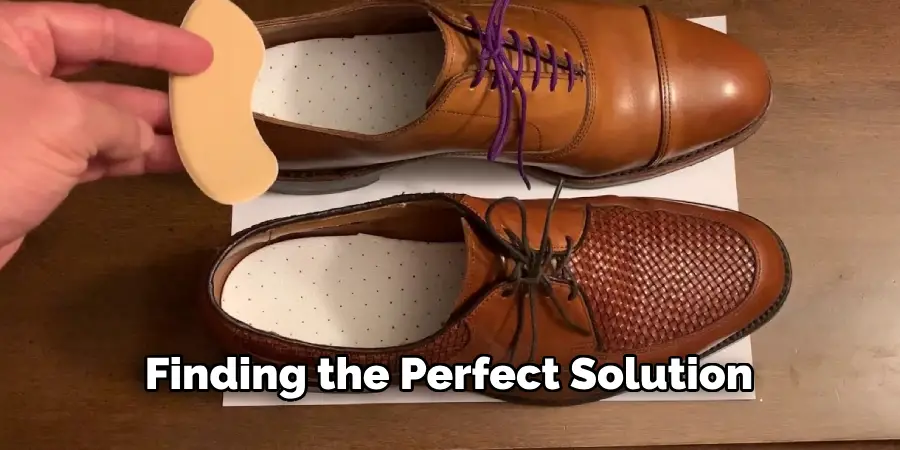
- Incorrect Size Selection: Perhaps the most obvious reason, choosing loafers that are too large for your feet can lead to a loose and uncomfortable fit. It’s essential to correctly measure your feet and possibly consult a sizing chart specific to the brand to ensure the best fit.
- Material Stretching: Over time, the materials of your loafers, especially those made from genuine leather or suede, can stretch. This natural stretching process can cause once well-fitting shoes to become loose, particularly around the width and heel areas.
- Variations in Sock Thickness: The thickness of your socks can significantly affect how your loafers fit. Wearing thinner socks than those you wore when purchasing your loafers can result in a looser fit, while thicker socks might make them too tight.
- Foot Shape Changes: Your foot size and shape can change over time due to various factors such as aging, weight changes, or health conditions. These changes can affect how your shoes fit, with loafers becoming loose if your feet have gotten smaller or narrower.
Recognizing the specific reason behind your loose loafers is crucial in selecting the most effective solution to improve their fit.
DIY Solutions for Tightening Loose Loafers
Once you’ve identified the reason behind your loose loafers, you can explore several DIY solutions to achieve a better fit. These methods are straightforward and can be implemented at home with minimal effort and expense. Below are some of the most effective DIY fixes for loose loafers:
- Tongue Pads: Applying self-adhesive tongue pads beneath the tongue of the loafer can help fill excess space, providing a tighter fit and preventing your foot from sliding forward.
- Heel Grips: If your loafers are loose around the heel area, adhesive heel grips can offer an immediate solution. These grips attach to the inside back of your shoe, reducing slippage and improving overall fit.
- Insoles: Inserting insoles not only provides additional support and comfort but can also take up extra space inside the shoe, leading to a snugger fit.
- Thicker Socks: Opting for thicker socks can compensate for extra room and improve the fit of your loafers, especially useful if variations in sock thickness were contributing to the issue.
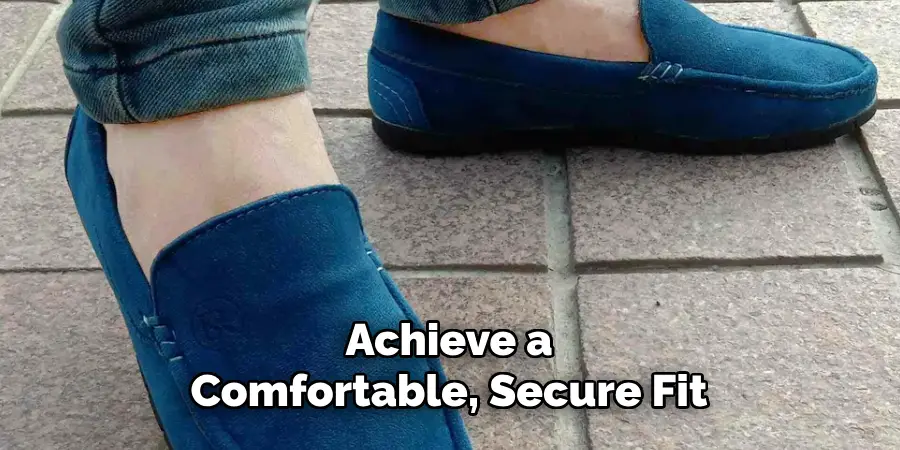
It’s important to experiment with these solutions to find the one that works best for your specific situation. Remember, the goal is to achieve a comfortable, secure fit without compromising the loafer’s style or causing damage to the shoe.
Impact of Loose Shoes on Comfort and Walking Stability
Wearing shoes that fit loosely can significantly impact both comfort and walking stability, creating a series of issues that can affect daily activities and overall foot health. Ill-fitting loafers, in particular, can lead to a lack of foot support, causing foot fatigue due to the extra effort required to keep the shoes on while walking.
This can further lead to an unnatural walking pattern as the wearer might unconsciously adjust their stride to prevent the shoes from slipping off, potentially causing strain on the ankles, knees, and hips. Besides physical discomfort, loose shoes can increase the risk of tripping or stumbling, thereby compromising walking stability.
Continuous wearing of loose-fitting footwear may also accelerate the development of foot-related problems such as corns, calluses, and blisters due to the constant rubbing against the skin. Therefore, ensuring loafers and other types of shoes fit snugly is crucial not only for comfort but also for maintaining proper walking stability and preventing potential foot ailments.
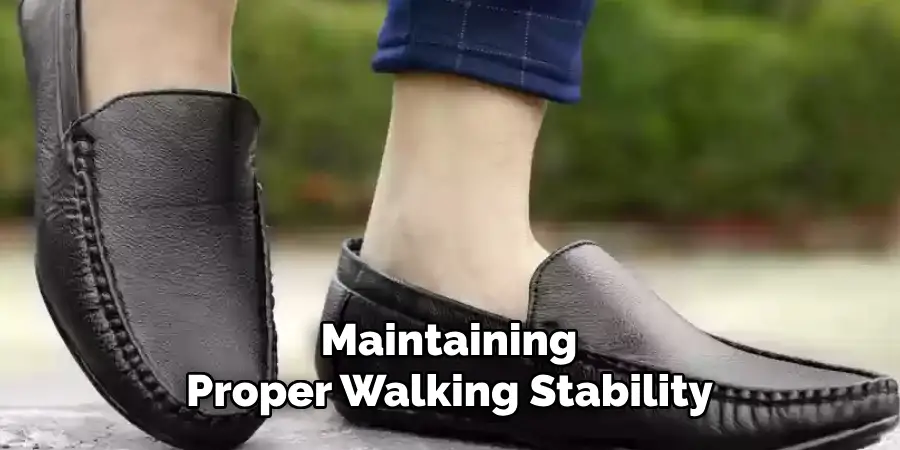
Types of Loafer Materials and Their Characteristics
Loafers are available in a variety of materials, each offering distinct characteristics that can influence both their appearance and performance over time. Understanding the different materials used in loafer construction can help you make an informed decision when selecting a pair that meets both your style and functional needs. Here are some of the most popular materials used for loafers:
- Leather: Leather loafers are highly sought after for their durability and classic look. Genuine leather adapts to the shape of your foot over time, offering a personalized fit. It’s also breathable, which reduces moisture inside the shoe, keeping feet dry and comfortable. However, leather loafers require regular maintenance to keep them in good condition and to extend their lifespan.
- Suede: Suede, which is made from the underside of animal skin, offers a softer texture than traditional leather. It provides a unique and luxurious appearance, perfect for both casual and formal settings. Suede loafers are known for their flexibility and comfort but are more susceptible to staining and require greater care to maintain their appearance.
- Synthetic: Synthetic materials, such as faux leather and polyester, are often used as a cost-effective alternative to genuine leather and suede. While not as durable or breathable as natural materials, synthetic loafers can be more resistant to water and easier to clean. They provide a viable option for those seeking a stylish look without the higher price tag of natural materials.
- Canvas: Canvas loafers are lightweight and highly breathable, making them an excellent choice for casual wear in warm weather. They can be easily cleaned and maintained, though they might not offer the same level of durability or support as leather or suede options.
Each material brings its own set of benefits and considerations, from the luxurious feel and durability of leather to the casual, breathable nature of canvas. By understanding these characteristics, you can select a pair of loafers best suited to your preferences, lifestyle, and the demands of your daily activities.
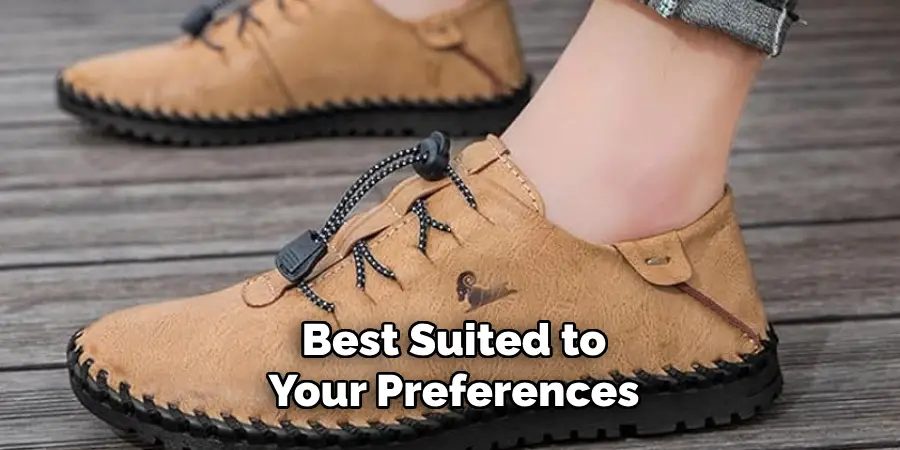
Preventing Discomfort and Foot Pain
Preventing discomfort and foot pain begins with recognizing the importance of well-fitted shoes and proper foot care. Loafers, being a popular choice for their slip-on convenience and stylish appeal, should also provide sufficient support to avoid any foot-related issues. Here are several tips to ensure maximum comfort and minimize the risk of foot pain:
- Select the Right Size and Fit: Always measure your feet before purchasing new loafers, as foot size can change over time. Choose shoes that fit snugly but don’t pinch or restrict natural foot movement. Considering the width of the shoe is equally important to accommodate your foot comfortably.
- Break-in Period: Gradually breaking in new loafers can prevent blisters and discomfort. Start by wearing them for short periods at home, gradually increasing wear time to allow the material to stretch and mold to your foot’s shape.
- Arch Support: If the loafers lack adequate arch support, consider adding orthotic insoles designed for your specific foot needs. Good arch support can alleviate pain and distribute pressure evenly across your feet.
- Moisture-Wicking Liners: To keep feet dry and prevent the growth of bacteria that can lead to foot odor and infections, opt for loafers with moisture-wicking interior lining or use moisture-absorbing footbeds.
- Foot Exercises and Stretches: Regular foot exercises and stretches can strengthen foot muscles, improve flexibility, and reduce the risk of foot pain. Simple exercises like toe curls or marble pickups can be effective.
- Regular Rest Periods: If your daily activities involve long periods of standing or walking, ensure you take regular breaks to rest your feet. Elevating your feet can also reduce swelling and fatigue.
By incorporating these practices, individuals can significantly reduce their chances of experiencing discomfort and foot pain, ensuring that their loafers not only add to their style but also to their overall foot health and comfort.
10 Methods How to Make Loose Loafers Fit
1. Use Heel Grips or Inserts
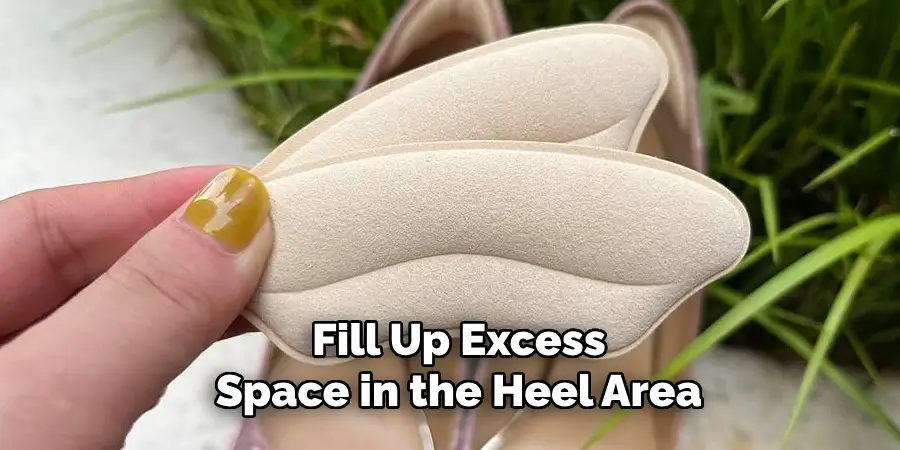
Heel grips or inserts are adhesive pads designed to provide extra cushioning and grip at the back of the shoe. They can help fill up excess space in the heel area of loose loafers, preventing slippage and improving overall fit. Simply peel off the backing and place the heel grips inside the back of the shoe, ensuring they adhere securely to the heel counter. Choose a thickness that provides the right amount of cushioning without causing discomfort or altering the fit of the shoe.
2. Try Toe Inserts or Pads
Toe inserts or pads are another option to consider for improving the fit of loose loafers. These inserts can be placed inside the toe box area of the shoe to fill up any extra space and provide a snugger fit. They come in various materials and thicknesses, so experiment with different options to find the one that works best for your foot shape and comfort preferences. Toe inserts can also help alleviate pressure points and prevent toes from sliding forward in the shoe.
3. Adjust the Lacing or Buckles
If your loafers feature laces or buckles, adjusting them can help achieve a better fit. For loafers with laces, try tightening them slightly to reduce excess space around the foot. If the loafers have buckles or straps, adjust them to a tighter setting to secure the foot more snugly in place. Be careful not to over-tighten, as this can cause discomfort or restrict circulation. Aim for a firm yet comfortable fit that provides adequate support and stability.
4. Wear Thick Socks
Wearing thick socks can temporarily fill up extra space inside loose loafers and improve the overall fit. Opt for socks made from materials like wool or cotton, which provide added thickness and cushioning. Fold the socks over at the heel to create extra padding and prevent slippage. While this method may not provide a permanent solution, it can be effective for short-term wear or when you need a quick fix to make your loafers fit more comfortably.
5. Use Insoles or Orthotic Inserts
Insoles or orthotic inserts are designed to provide additional support and cushioning inside shoes. They come in various shapes and sizes to accommodate different foot shapes and arch types. Inserting insoles or orthotic inserts into your loafers can help fill up excess space, improve overall fit, and provide added comfort and support. Choose a style that fits snugly inside your loafers without crowding the toe box or altering the fit of the shoe.
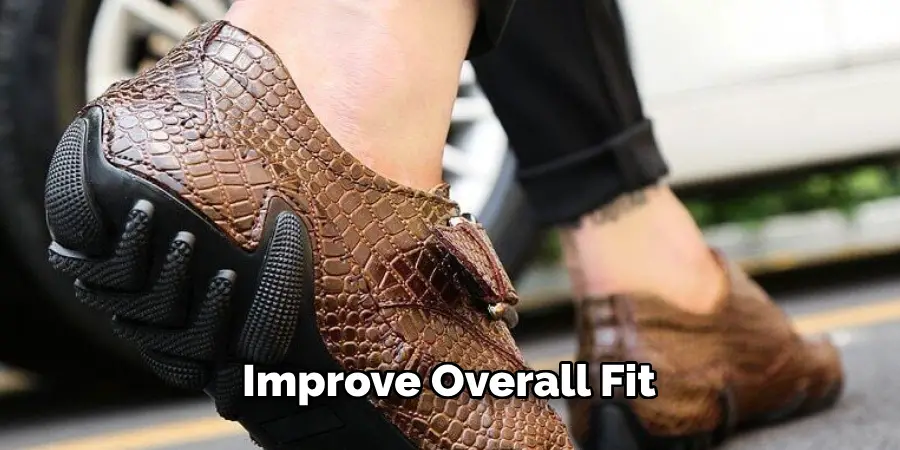
6. Apply Adhesive Strips or Cushions
Adhesive strips or cushions can be placed strategically inside loose loafers to provide extra padding and support where needed. They can help alleviate pressure points, reduce friction, and improve overall comfort. Apply adhesive strips or cushions to areas of the shoe where you experience rubbing or discomfort, such as the heel or sides of the foot. Make sure to trim them to the appropriate size and shape to avoid bunching or slipping inside the shoe.
7. Consider Professional Stretching
For stubbornly loose loafers that require more extensive adjustments, consider seeking professional stretching services from a shoe repair shop or cobbler. Professional stretching involves using specialized equipment and techniques to stretch out the leather or material of the shoe to achieve a better fit.
This method is particularly effective for leather loafers, as leather has natural elasticity that can be manipulated to conform to the shape of your foot. Professional stretching can also help alleviate tightness or discomfort in specific areas of the shoe.
8. Use a Hairdryer and Socks
A DIY stretching method involves using a hairdryer and thick socks to stretch out the material of loose loafers. Start by putting on a pair of thick socks and then wearing the loafers. Use a hairdryer set to medium heat to warm up the material of the shoes, focusing on areas where you need extra stretch. While the material is still warm, flex your feet and toes to help shape the shoe to your foot contours. Continue wearing the shoes until they cool down completely to help set the stretched shape.
9. Consider Shoe Stretching Sprays
Shoe stretching sprays are specially formulated solutions designed to soften and stretch out the material of shoes. They can be sprayed directly onto the inside of loose loafers to help relax the material and improve the fit. Follow the manufacturer’s instructions carefully and allow the shoes to dry completely after applying the spray. While shoe stretching sprays can be effective for minor adjustments, they may not provide as dramatic results as other stretching methods.
10. Invest in Custom Orthotics
For individuals with specific foot concerns or conditions, custom orthotics may be a worthwhile investment to improve the fit and comfort of loose loafers. Custom orthotics are tailor-made inserts designed to provide personalized support and cushioning based on your foot shape and biomechanics.
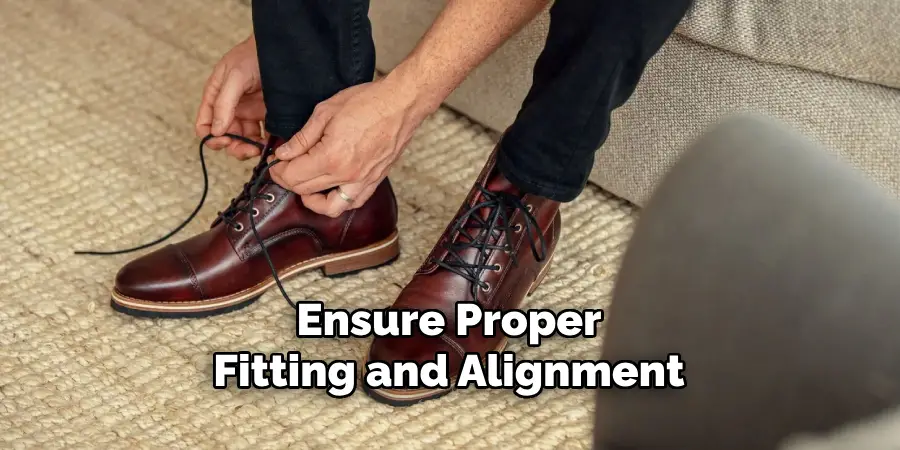
They can help address issues such as flat feet, high arches, or pronation, while also improving overall comfort and stability. Consult with a podiatrist or orthopedic specialist to determine if custom orthotics are right for you and to ensure proper fitting and alignment.
Conclusion
In conclusion, dealing with loose loafers doesn’t have to lead to discomfort or compromise your style. From simple DIY fixes like heel grips and toe inserts to more elaborate solutions such as professional stretching and custom orthotics, there are numerous ways to achieve a better fit. It’s important to choose the method that best suits your needs, taking into consideration the material of your loafers, your foot shape, and any specific foot conditions you may have.
Remember, the goal is to find a balance between comfort and style, ensuring your loafers serve you well without causing discomfort or injury. By exploring these options, you can enjoy your favorite pair of loafers to the fullest, stride with confidence, and ensure your footwear complements your lifestyle seamlessly.

